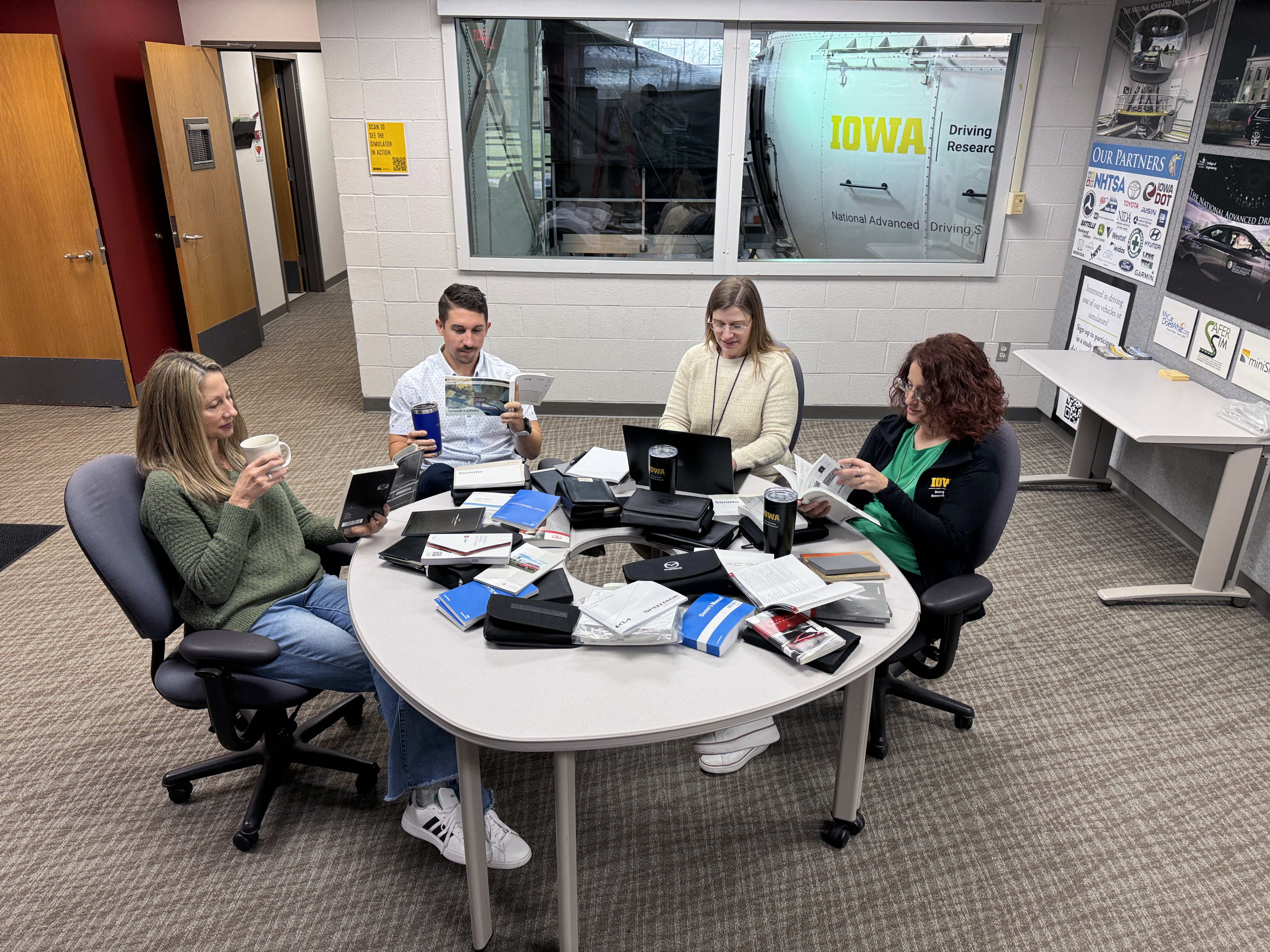
4 minute read
ADAS Projects
Our investigators have continued their focus on a series of studies analyzing advanced driver assistance systems (ADAS) technology and consumer understanding of ADAS features.
ADAS Education and Outreach
Behavioral Traffic Safety Cooperative Research Program (BTSCRP)
Researchers completed Phase 1 this year, which involved reviewing and classifying ADAS education materials, standards, and literature. “This wasn’t the typical literature review. We focused on identifying how this material is used in the real world,” explained Justin Mason, assistant research scientist.
Now in Phase 2, the team is developing a guide to assist practitioners such as DOT and DMV personnel to provide training about ADAS. This guide will present key considerations for practitioners as well as strategies to identify, evaluate, and modify educational materials to fit their intended purpose.
The team is completing case studies using adaptive cruise control (ACC) to illustrate how the guidance can be applied. “The ACC case studies can be easily modified in the future to fit other ADAS and several driving populations,” added Mason.
Beyond Original Owners
Sponsored by the AAA Foundation for Traffic Safety
In a project titled, “ADAS and Automation Safety Considerations Beyond the Original Purchaser,” the research team will explore drivers’ understanding of vehicle technology among those who have purchased new vehicles and those who have not (i.e., ADAS users who have purchased used vehicles or have rented or borrowed one).
The team is developing a survey to identify potential gaps in ADAS understanding and experience among these consumer groups and to better understand how learning methods differ between them.

ADAS involvement in near-crashes, crashes, and crash investigations
Sponsored by the Iowa Department of Transportation (DOT) and Colorado DOT
Findings and recommendations were presented this past fall from a recent study involving interviews and surveys with motorists and officers. The motorists were involved in crashes or near-crash situations while driving a vehicle with ADAS, and officers were asked how they consider ADAS when they complete crash reports.
Motorists: The findings showed that while some motorists are well-informed, many misunderstand or over-rely on their ADAS features. Some motorists conflate functions performed by different ADAS; for example, distance alerts and forward collision warnings were often described as being part of adaptive cruise control. Information and training on ADAS from dealership sales staff also varies widely.
Officers: Like motorists, officers have a wide range of ADAS understanding. Many officers believe ADAS can only be considered in a crash investigation if data can be retrieved from a vehicle’s event data recorder. Eighty percent of officers said they want more training on ADAS to know what questions to ask in their crash investigations.
OEMs: Recommendations for manufacturers include making it easier for motorists to identify the exact features on their vehicle by allowing them to enter their VIN online – since owner’s manuals are not vehicle-specific.
“It’s critical that consumers and officers are better educated about these systems,” said Michelle Reyes, senior research associate. “We’ve seen that if drivers don’t understand the ADAS on their vehicle, it can contribute to crashes and near-crashes.”
See more findings and recommendations in the project webinar at: bit.ly/3Zu8tiW
Toyota Consumer Education
In a multi-year project with the Toyota Collaborative Safety Research Center, researchers have completed Parts 1 and 2, where they assessed consumer education content for ADAS understanding after over-the-air updates.
Now, in Part 3, they will look at consumer education over time, including where, how, and when drivers should get educated. Study participants will attend multiple visits with simulator drives and will be given consumer education at different points.
“We’re helping Toyota understand where the good touch points are for drivers who have purchased a new vehicle. How can they shape new-driver training, and when would be the best time to provide that training?” explained John Gaspar, director of human factors research at DSRI.










